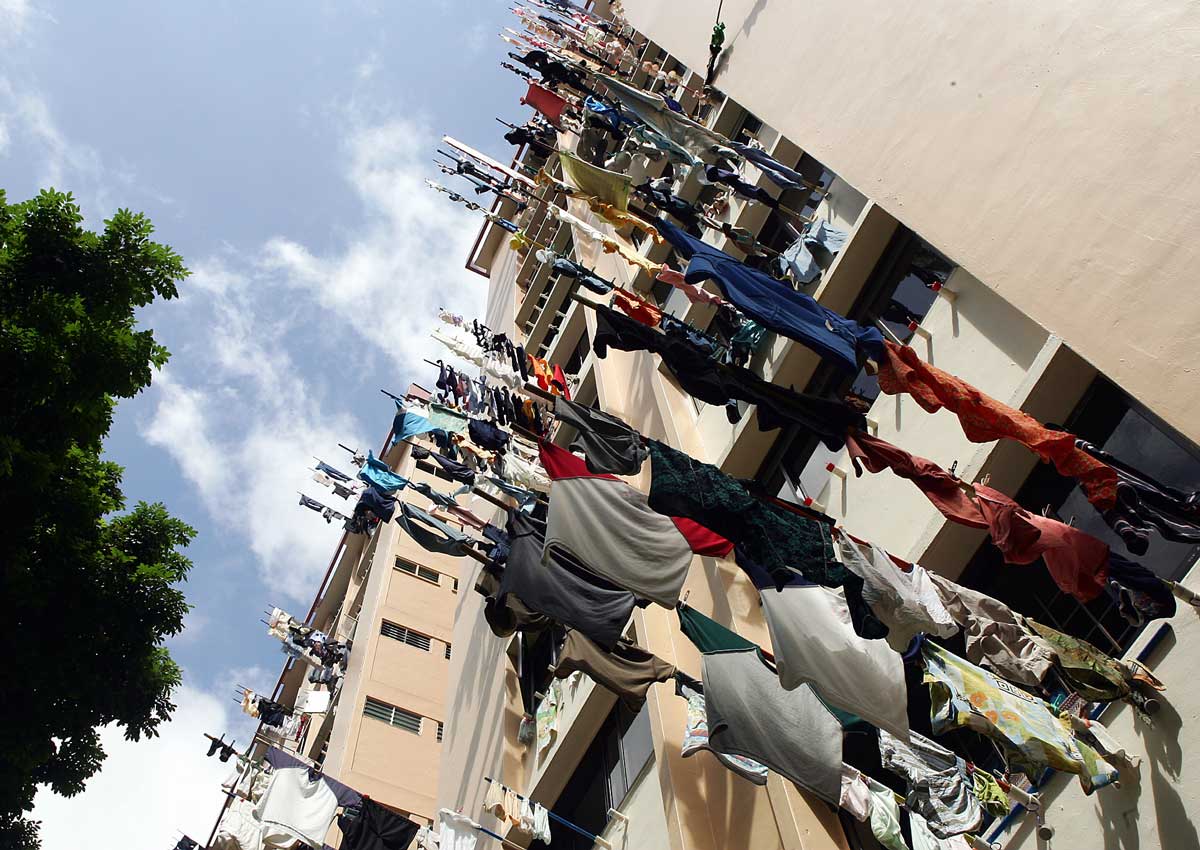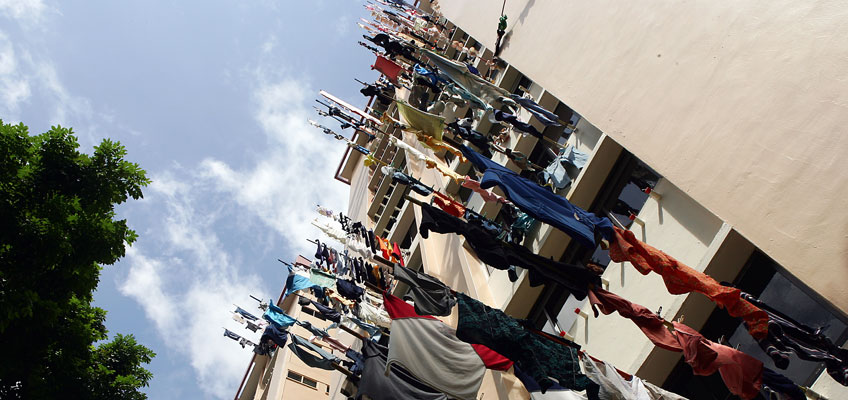The familiar laundry drying racks that dot Singapore’s public housing landscape may look different in time to come, as the Housing Board is considering some new designs.
The HDB is reviewing its external clothes drying rack system, which can be found outside the windows of most flats here, The Straits Times has learnt.
It put up two tenders at the end of June this year, calling for 11 types of drying systems to be made and put through wind tests.
Of these, three are designs already used by households: pipe sockets into which laundry poles are slotted; galvanised steel racks with grooves that support both sides of the pole; and similar racks with an additional metal plate with holes.
Six of the new designs feature stainless steel drying racks with grooves of different shapes.
The remaining two will be revealed only after the tender is awarded.
Responding to queries, an HDB spokesman said the tests are part of a regular review “to assess how we can further enhance the clothes drying rack system, taking into consideration factors such as weather conditions, and the type of laundry poles used”.
She added that no other details are available as the review is still at a preliminary stage.
Clothes drying racks in HDB blocks have evolved over the years. From the 1960s to early 1990s, they came as pipe socket holders. Racks with two plates that support both ends of the laundry pole were introduced from 1995. Some of these racks were later fitted with an additional metal plate with holes to stop poles from dislodging.
From 2002, new flats come with fixed metal racks that did away with bamboo poles.
When shown the latest proposed designs, experts and residents said they prefer some of the new designs over the existing ones, citing factors such as safety and user-friendliness.
Fong Kim Choy, deputy president of the National Safety Council of Singapore, said design 3A, which comes with jagged-shaped pole slots instead of straight ones, would be “most effective” in preventing dislodgement.
“The addition of the third plate closest to the window would also help retain the pole in the event of strong winds,” said Mr Fong, 65.
But John Heng, senior lecturer at Nanyang Technological University’s School of Mechanical and Aerospace Engineering, noted that the designs with jagged slots could “hinder the smooth removal” of poles.
“The sharp protrusions will cause the scoring of the surface on the poles and damage the poles,” added Dr Heng, 50.
He noted, however, that the use of stainless steel would make the new designs more weather resistant as opposed to galvanised steel, which can rust when the coating material is damaged.
But noting that there is still a risk of users falling from leaning too far forward when using the racks, Associate Professor Chui Yoon Ping, head of the human factors in safety programme at UniSIM, said: “We really need to remove the use of poles altogether and think of a much safer way of drying our clothes.”
yeosamjo@sph.com.sg

Get MyPaper for more stories.







